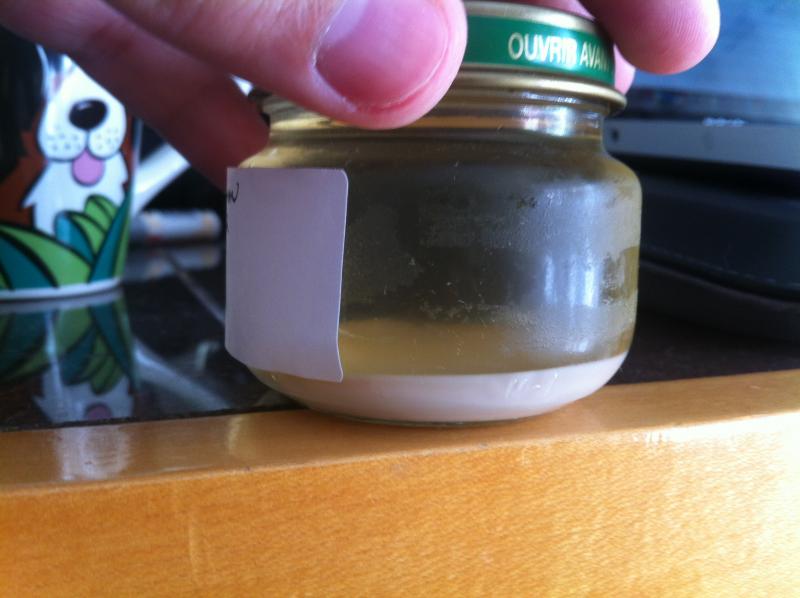As I don't yet have the equipment to slant yeast, I've been washing yeast I wish to save both from a carboy and a starter (for bottle harvested yeast). Because fridge space is at a premium I'll often take it once step further and once all the yeast has settled down in the quart jars I'll boil water & baby food jars, decant off a lot of the liquid in the quart jars and swirl up and transfer the yeast to the baby food jars.
The process works great, but I'd like to be more precise about making proper starters using either mrmalty or yeastcalc.com which means I need to know the volume of slurry.
I've attached a picture example of a baby food jar of harvested Rogue Pacman yeast. Is there any forumla I can use to determine that volume of slurry without having to resort to decanting, swirling and pouring into a very small graduated beaker?

The process works great, but I'd like to be more precise about making proper starters using either mrmalty or yeastcalc.com which means I need to know the volume of slurry.
I've attached a picture example of a baby food jar of harvested Rogue Pacman yeast. Is there any forumla I can use to determine that volume of slurry without having to resort to decanting, swirling and pouring into a very small graduated beaker?



